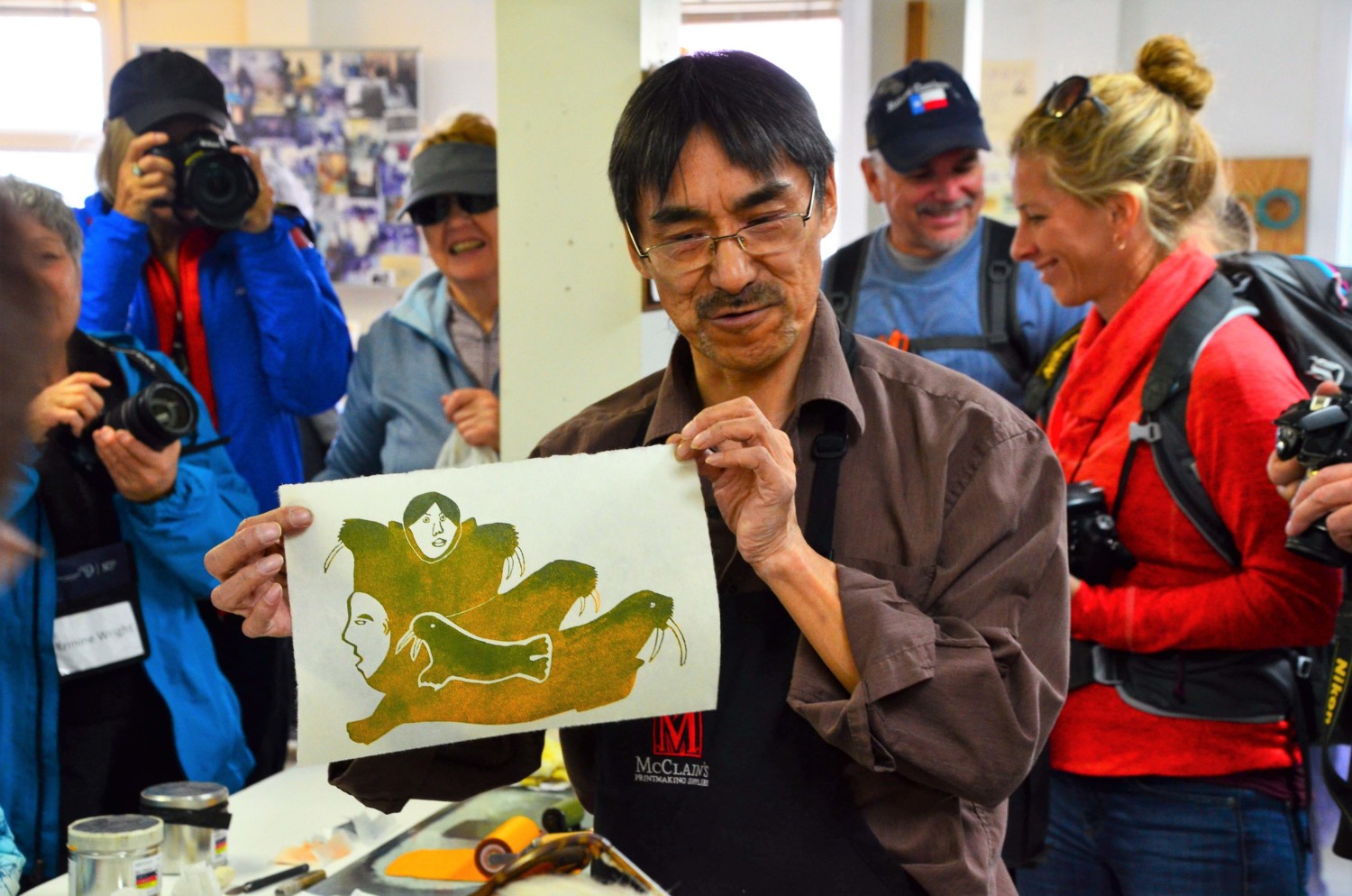Watching a seal skinning or “flensing” as it is called in the Arctic, was not on my bucket list.
But here we are, looking on as one of the Kimmirut elders begins the task of separating skin and fat from body and bone. He works with a single blade of about five inches and explains that the cuts he makes allow a family member to make “kamiks” (boots) from the skin.

Having separated some of the blubber from the seal skin, the elder slices the blubber into bite-size pieces and offers it to onlookers, some of whom accept. I’m not brave enough to sample; in fact, I give myself points just for watching this process. I must remember, however, that for the residents of Kimmirut and others who live in far northern Inuit communities of Canada, hunting, butchering and processing mammals, fish and birds are necessary to sustain life here on the Arctic’s Baffin Island.
Know, too, that Inuit waste nothing; all parts of animals are used.
That’s because the consumer goods and conveniences we take for granted here in “the south” are mostly beyond affordability for Arctic dwellers. Think $10 toothbrushes, $12 cucumbers and unreliable/expensive internet. Roads are hard-packed earth and gravel, and water is delivered daily by truck, even during the unimaginably cold winters.
Considering the challenges, Inuit survival is nearly magic; they have become incredibly resourceful at providing for their communities.
We arrived in Kimmirut via Zodiac rafts, launched from the 190-passenger Ocean Endeavor. The village was one of several stops on Adventure Canada’s “Heart of the Arctic” tour in mid-July. Despite a dry wind making it seem cooler than 57 degrees, a young woman strode up a hill in flip-flops with gold-tinsel tassels that sparkled in the Arctic sun. It is summer, after all.
We were warmly greeted by townspeople who acted as our tour guides, walking with us to the village school (160 students; kindergarten through 12th grade); the century old Anglican Church, which everyone attends except in spring and summer, when whole families leave to hunt and fish; the office of the Royal Canadian Mounted Police; and the medical clinic, staffed by two nurses. Doctors and dentists visit quarterly, and women who are eight months pregnant and emergencies are flown to Iqaluit, the capital of Nunavut.

In Kimmirut, population 450, everyone is related to everyone, although they can’t always tell you how. (Cousin is a safe bet).
Parents sometimes must count on their fingers when asked how many children they have because adoption is common; women who have “plenty of children” give away a child or two to those who have none. And older siblings raise offspring of younger siblings if necessary.
A day earlier, we were welcomed by residents of Cape Dorset, also on Baffin Island northwest of Kimmirut. The community of 1,500 is known for its high concentration of print-makers and stone carvers, who will soon have an upgraded venue to exhibit their works. A new cultural center is under construction.
For now, visitors can watch artists work in studios, galleries and back yards.

Baffin Island is a part of Nunavut, Canada’s newest territory. It was created in 1999 after many years of negotiations between the Canadian government and the country’s indigenous peoples. They received nearly $1.15 billion (to be paid over 14 years), and 136,530 square miles of what was the Northwest Territory.
The complicated and long-in-the-making agreement was built on the tenets that the rights to the land, on which the Inuit have lived for thousands of years, were never signed away; and that Inuit still depend on the land and sea for sustenance.
For more commentary and photos of the people who live in Arctic communities, visit www.facebook.com/elouiseondash. (Warning: some may find photos of the seal flensing offensive.)
E’Louise Ondash is a freelace writer living in North County. Tell her about your travels at [email protected]

